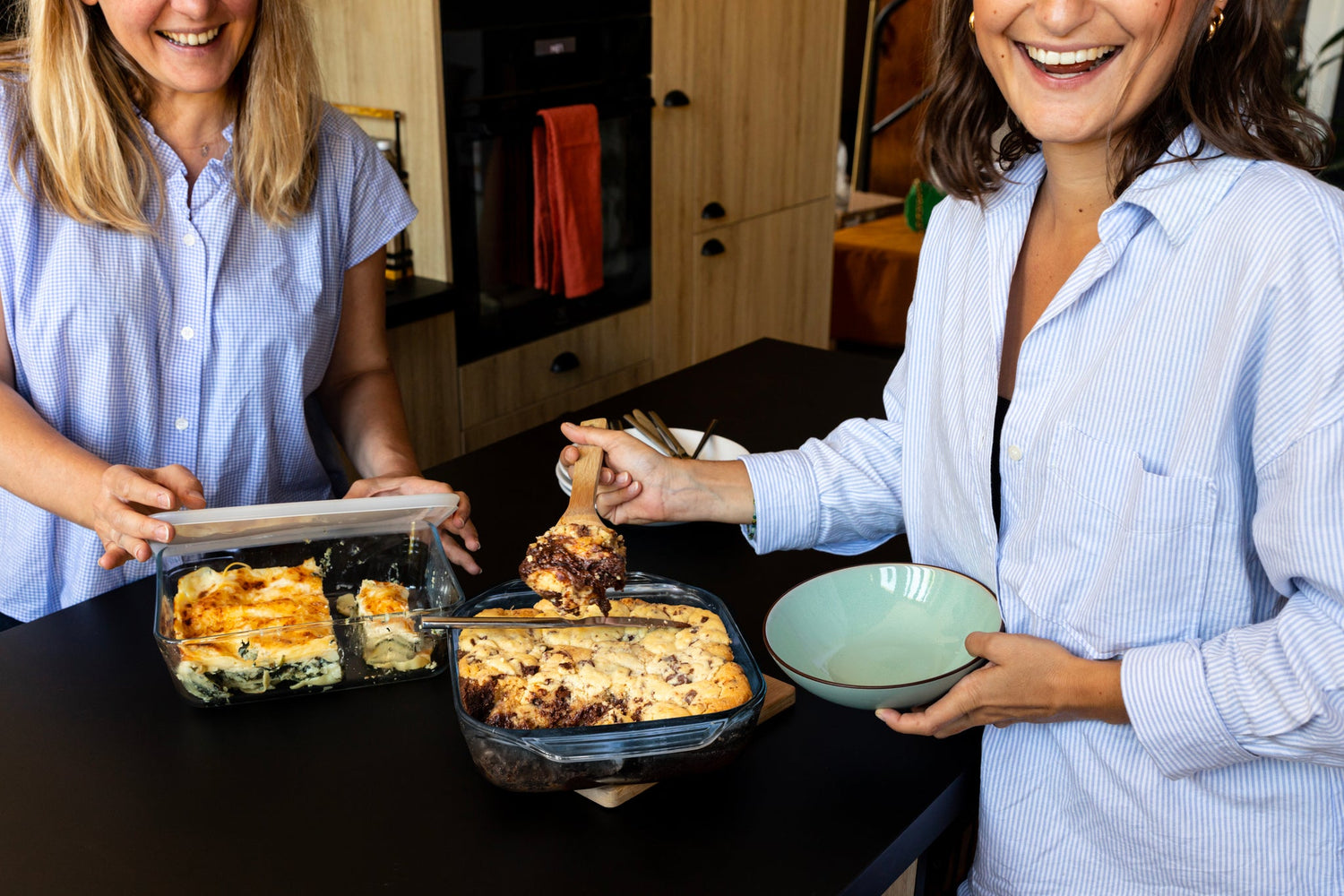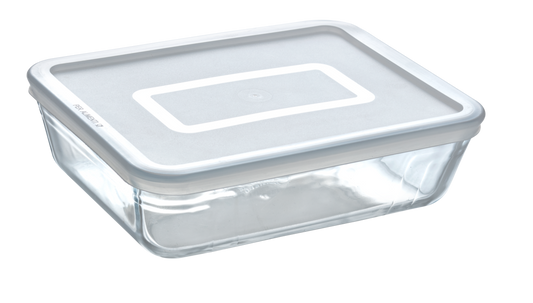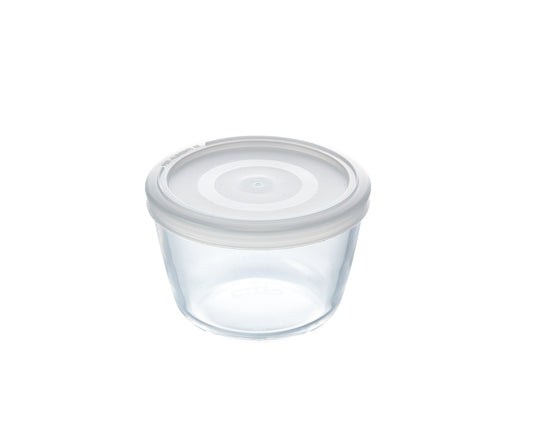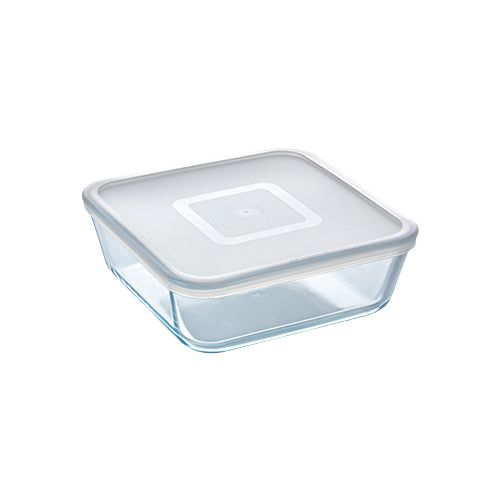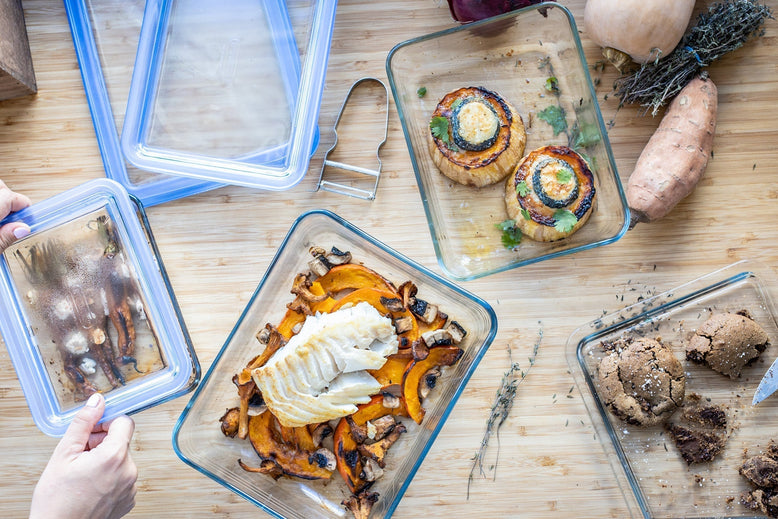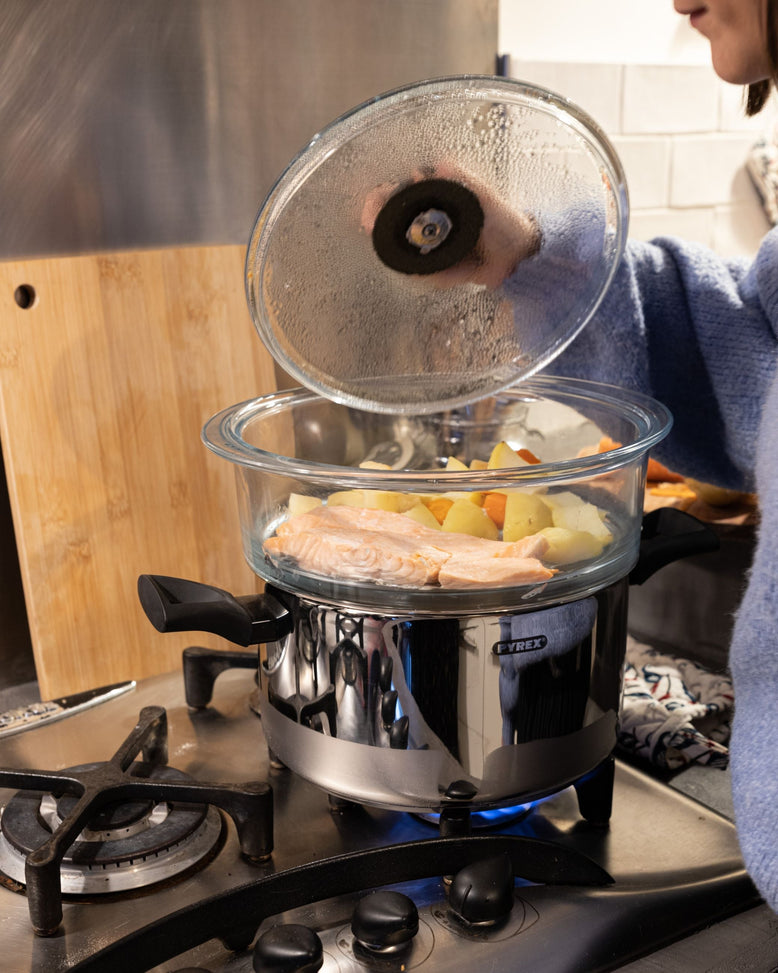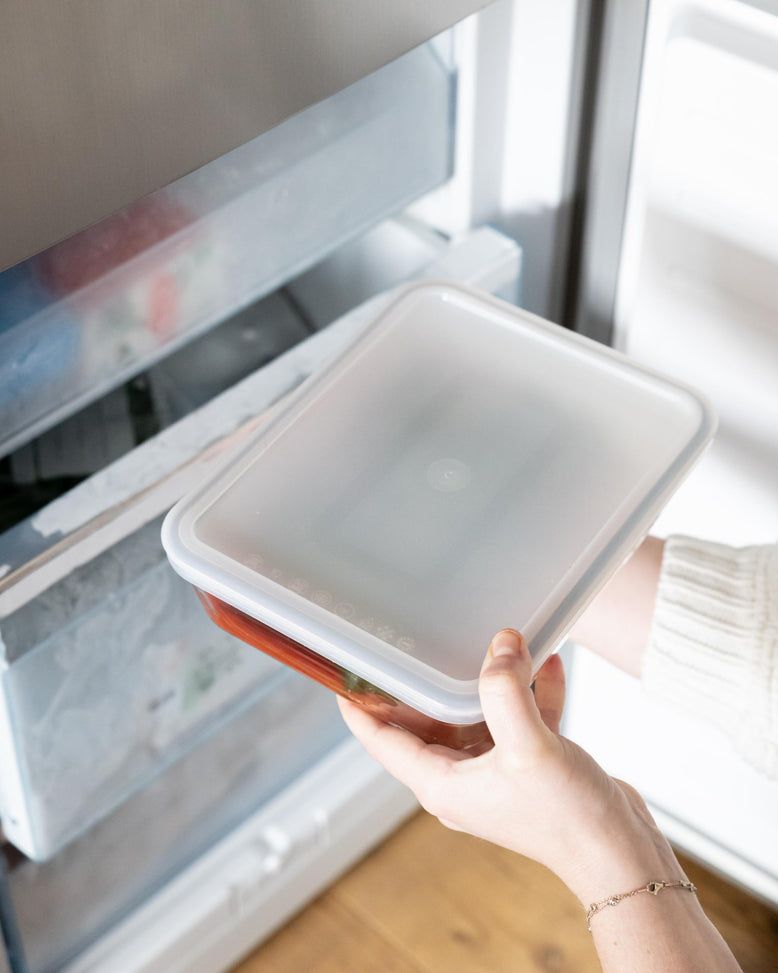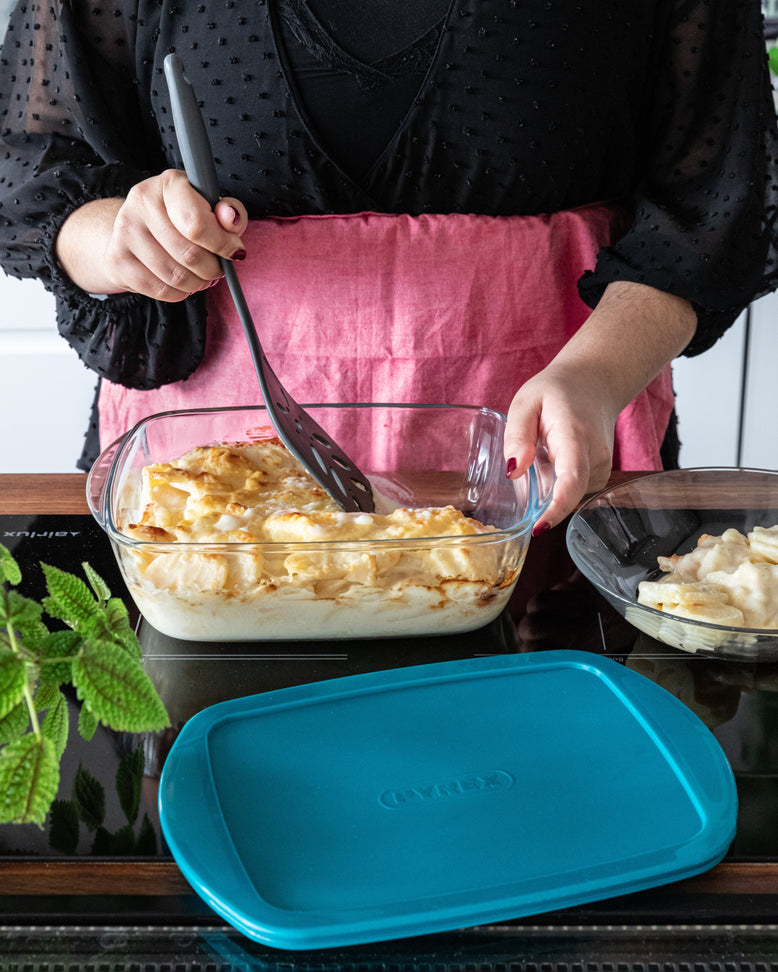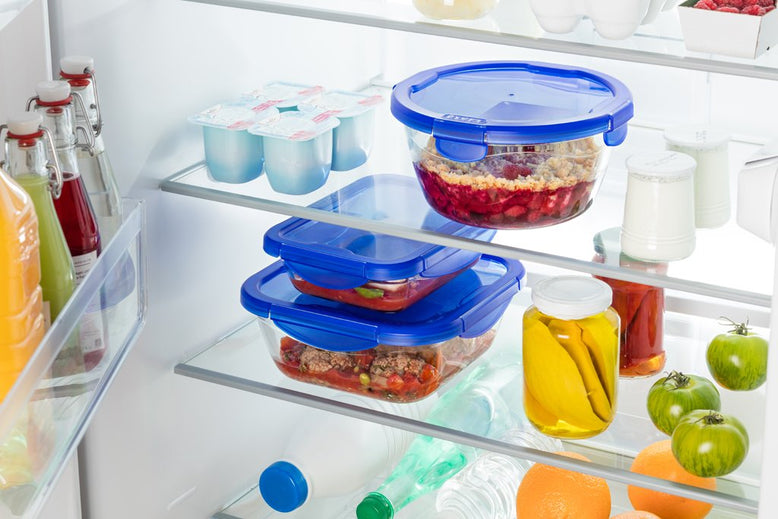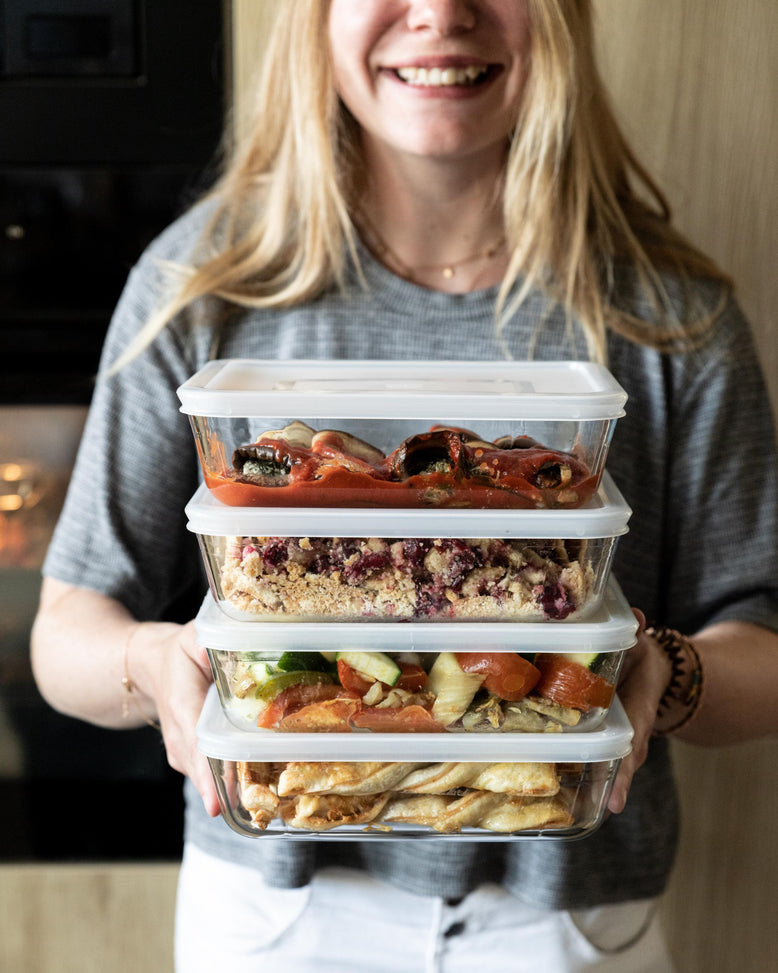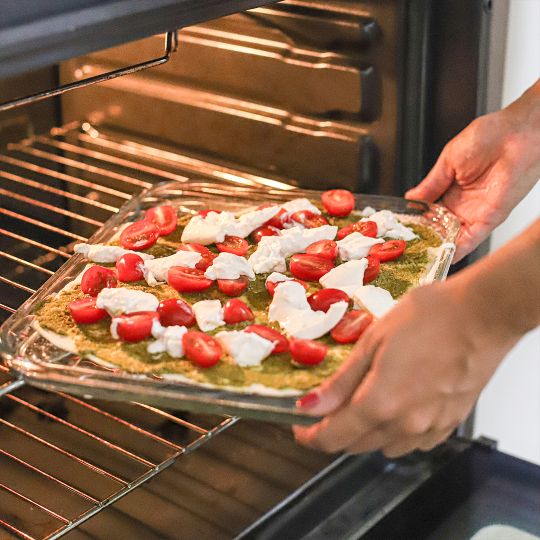The ultimate guide to freezing
Did you delight your friends with your unique lasagna recipe? Yet, even the biggest eaters couldn’t finish it. So what to do? Simply store it in the freezer for next time! But be careful, to accomplish the freezing of your food and meal leftovers, Pyrex® invites you to remain cautious. Not all foods can be frozen and you must respect certain rules for proper preservation of your goods in your freezer.
What is the ideal temperature of a freezer?
Before talking freezer and ideal freezing temperature, a little reminder is necessary. The freezer is different from a freezer compartment. The first can lower its temperature to -24 °C and preserves your goods for several months. A freezer compartment is what we call the ice cube compartment of a refrigerator. Its temperature is about -4 °C. It makes it possible to preserve food a few days longer, but in no case can it preserve your meat and other goods in the long term. Caution then!
The ideal temperature of a freezer is -18 °C. If you wish to freeze food, it is advised to lower the temperature to -24 °C using a button dedicated to this use, before repositioning it at the usual -18 °C.
Pyrex® tip: remember to place a thermometer in your freezer to monitor its temperature.
What is the difference between freezing and deep freezing?
To put it simply, freezing and deep freezing guarantee the maintenance of cold, but we will see that there is an important difference between the two.
Freezing
It is reserved for individuals who own a classic freezer that can go down to -24 °C and can take 24 hours depending on the thickness of the food to be frozen. Freezing preserves your raw, blanched or cooked goods at -18 °C for several months, with a shorter consumption date for meat and fish than for vegetables.
Deep freezing
It is not possible for individuals with a classic freezer. It concerns professionals and industries who freeze goods at -30 °C in a very short time, which guarantees long-term preservation, provided the cold chain is not broken. You find these products in supermarkets and at frozen food distributors.
How to arrange your food inside the freezer?
We have seen how to organize your fridge. The proper preservation of your frozen food also requires good management of your freezer. Choose preferably a model with ventilated cold or no frost which does not make frost in your appliance. Good news! Your freezer does not require organization by type of food. You can therefore arrange your goods as you wish.
Why buy an upright freezer?
The upright freezer is equipped with drawers. It can be independent from your refrigerator or integrated. If this is the case, choose preferably a combined refrigerator equipped with two motors for more efficient operation. You will store your food by categories, meat with meat, fish with fish, etc.
Choosing a chest freezer
Equipped with a capacity generally larger than the upright freezer, the chest freezer opens from the top. There may be sliding baskets on the top to avoid having to turn everything over to recover a frozen food or dish. Remember to sort your food regularly and place the most fragile on top.
How to preserve your food without risks?
With a few exceptions, the majority of food products can be frozen and keep their appearance, texture and flavor, as well as most of their vitamin and mineral content. However, be careful to respect some basic rules.
-
For your health, never refreeze a product that has already been frozen. Beware of fish, for example, which has often been frozen before arriving at your fishmonger’s stall. On the other hand, it is entirely possible to refreeze a product if it has been cooked in between.
-
Frozen food must be ultra fresh and put in the freezer quickly, when returning from shopping or after cooking. They will thus preserve their organoleptic qualities, while limiting the appearance of bacteria.
-
Never freeze hot or warm food.
-
Never overload your freezer, the air must be able to circulate.
-
The temperature of your freezer is also important, make sure the freezer reaches -18 °C.
-
For successful freezing, wrap your food tightly and hermetically in containers adapted to the size of the content.
-
Use a transparent glass food container to check the condition of your food and identify them.
-
Label your storage box (expiry date, quantity) to better find your way around and thus prevent any risk of food waste.
-
Never leave your freezer open.
Pyrex® anti-waste freezing tip: favor the freezing of small food portions! This allows you to adjust more easily the proportions you wish to consume later. It also facilitates freezing and then defrosting.
-
Remember to put a thermometer to monitor the temperature.
-
Clean and defrost the inside of your freezer regularly.
-
Consume your food by expiration date.
-
Be sure to respect the recommended storage times: 24 months for fruit and vegetables, pastries, pasta and raw viennoiseries; 2 to 3 months for cooked and minced meats; 3 months for homemade dishes and 1 month for bread.
How to check that a frozen product is still good?
It is possible, even though you have taken all precautions, that some food is no longer consumable. You can notice it either when taking them out of the freezer, or after defrosting. Be cautious! Here is how to detect them.
The appearance of the product
It is normal that some products change appearance with freezing, but if you notice a change of color, an impression of cooked and whitish part on the meat, this can be the indication of an oxidation of the product in progress. Do not hesitate to throw it away. Also take the time to check the visual preservation state of other products present in your freezer and get rid of them.
The smell
Nothing better than smelling the product before cooking it. Your sense of smell is your best friend! In case of suspicious smell, especially with meat and fish, immediately throw the product away.
Ice crystals
They are mainly found in more classic freezers and those that are not no frost. They appear when your goods are in contact with air. The water present can then escape and turn into ice or flakes. The product can quite well be consumed, only its taste or texture may be altered. However, be careful, these ice crystals may originate from a product that has been defrosted then refrozen and which is, then, not consumable.
Liquid leaks
It is possible to find frozen liquids at the bottom of your appliance. They may come from a spoiled product that leaked, a bag not hermetically closed or a break in the cold chain. Beware of other food that may have come into contact with the liquid that leaked, they may be rendered unfit for consumption.
Which foods cannot be frozen or what deadlines should be respected?
Here is some general information to take into account:
Not all food resists freezing: for example, fruits and vegetables rich in water (melon, lettuce, cucumber, tomato, strawberry) will not come out very well and will lose all their taste qualities. Other examples: eggs, fresh cheeses or soft cheeses, or even yogurts or cream desserts; after defrosting, they will have lost texture and taste.
Eggs
The main risk is the explosion of the shell of an egg placed whole in the freezer with the ambient cold. Whether the whole egg is frozen raw or cooked, it will take a rubbery texture once defrosted.
It is however possible to freeze fresh egg whites:
-
whose yolks have just been used (for a cream, for example);
-
not whipped;
-
ultra fresh.
They can be used cooked only in a next culinary preparation. Be careful, do not use them as raw whipped egg whites in a chocolate mousse after defrosting.
Fruits rich in water
Strawberries and other red fruits, including melon, are full of water. They can be frozen, but will never regain their initial state. You can also buy them already deep frozen to make smoothies or coulis, they will be better presented, as they will have undergone industrial deep freezing.
Vegetables rich in water
Zucchini and squashes can be frozen without problem. On the other hand, never freeze tomatoes, cucumbers or raw vegetables and even less lettuce which would be immediately “cooked” by the cold. If you have tomatoes left from the garden, prepare sauces or soups that you will keep in a Pyrex® freezing container and that will be ready to consume.
Fresh and soft cheeses
If hard cheese freezes perfectly (raclette cheese in particular), fresh and soft cheeses, like goat or camembert will not resist freezing. They lose their taste and their texture has nothing to do with their original state.
Potatoes and other tubers
We advise you not to freeze raw: potatoes, sweet potatoes, Jerusalem artichokes and other parsnips. You can keep them in the freezer if they have been cooked in gratin or puree. Prefer to buy sautéed potatoes or duchess potatoes frozen that have undergone industrial deep freezing compatible with good preservation.
Dairy products, yogurts and cream desserts
Forget freezing dairy products. Their defrosting will separate the water present (whey) from the dry matter, making them unappetizing for consumption. The same goes for cream desserts and preparations based on fresh cream.
Should vegetables be frozen raw, blanched or cooked?
All three are possible! It all depends on the vegetables and their raw consistency.
Freezing raw vegetables
Raw carrots, peppers, cabbages, celery stalks can be frozen raw. Take the precaution of peeling, washing and drying them properly before putting them in the freezer preferably in a glass container.
Blanching vegetables before freezing
To blanch your vegetables before freezing, you simply need to:
-
choose them very fresh;
-
peel and wash them carefully;
-
plunge 1 to 2 minutes into unsalted boiling water in which you will have added a little lemon for light vegetables;
-
cool immediately in very cold water (do not hesitate to add ice cubes in the water, especially in summer when tap water is less cold);
-
drain carefully to remove maximum water;
-
possibly dry with a fine cloth or absorbent paper;
-
place in a glass container preferably or in freezing bags;
-
prepare portions according to household members;
-
put immediately in the freezer at -18 °C.
Cooked vegetables
These are those that pose the least problems provided you do not waste time after their preparation. Never freeze cooked vegetables that have stayed in your refrigerator! Let them cool well and freeze them immediately after cooking.
The advantages of Pyrex® dishes and accessories in freezing your food
Pyrex® has accompanied you since 1915 in the preparation of your meals with glass dishes and other containers dedicated to the preservation of your food.
The + of Pyrex® brand : did you know that by freezing your recipe in a Pyrex® dish, you could then reheat it directly in the oven, without waiting? The Pyrex® glass storage dishes ensure resistance to thermal shocks of 240 °C, so no need to wait for your dishes to be defrosted or to transfer them to another container, put them directly in the oven and enjoy them more quickly! Simple and ultra-practical.
From now on, equip yourself to freeze according to the rules of the art and enjoy all the advantages of this tip:
-
Consume local vegetables and fruits all year round!
Get into meal preping which allows you to prepare your dishes for several days and freeze them to enjoy them easily, when the time comes. -
Enjoy good little homemade dishes quickly!
-
Avoid food waste, it’s good for the planet and for your wallet!

